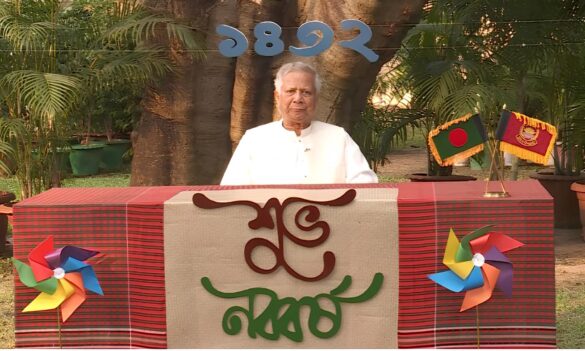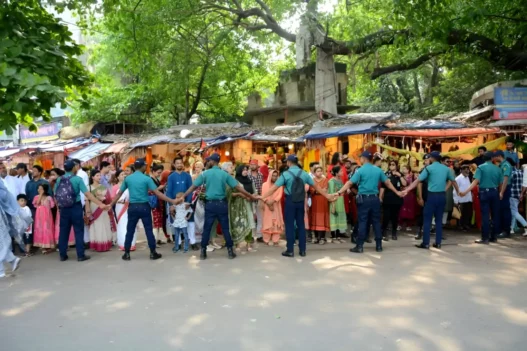Health stories from Suangdoh, Manipur
“The border region hold significant importance for the flow of local economy, hence the development of the border villages as centre for producing culturality and improving the economy in line with the Act East Policy is mandatory. Once the economy rises, the health status of the state will rise eventually as they go hand in hand.”
– Paukhenkhup Guite, Chief of Suangdoh
Health is one of the main indicators of a country’s economy, social growth and security. This is especially true in the borderlands which comprises of various groups of people of diverse ethnicities and who form the mainstay of such geographical realms. The intensity of the spread of diseases essentially owing to the lack of proper health infrastructure and general awareness among the people about the consequences of both communicable and other diseases is extremely high compared to many towns and cities.
Of all the borderlands, the hilly districts of Manipur in the Suangdoh sub-division of Manipur have been badly impacted by the spread of diseases which has left many marginalised section of the population vulnerable and prone to all forms of opinions and beliefs. A case in point is that of the Zo people or the Zomis who are a transborder community who reside along the India-Myanmar borderlands in Manipur’s Churachandpur district.
The Zomi tribe is relatively marginalised and mostly inhabits the hinterlands which make up the district of Churachandpur. While there is a rising awareness about improving the quality of life of the people, there continues to be a lack of understanding amongst most of the need for better health care systems. There may be several reasons for such apathy, but one that certainly stands out is the lack of proper health facilities in and around this borderland.
Often the geographical remoteness and poor connectivity have been held up as reasons for the overall development situation, particularly the falling health index, which when seen from a geopolitical lens is surely worrisome. Churachandpur is strategically placed and shares an international boundary measuring approximately 70 km with Myanmar. The Suangdai border also plays a crucial part in the country’s security and geopolitical landscape with Myanmar but till today, it has not received much importance, especially when compared to other borders like Behiang. This border region also comes under the ‘Free Movement Regime’ or FMR which means the indigenous community at the border sharing the same cultural and linguistic affinity have the right to visit their relatives beyond the border within a limit of 16 Kms without any visa restrictions.

Notwithstanding its localized importance as an important connectivity point between India and Southeast Asian countries, there remain basic concerns about the overall developmental infrastructure in the district. One of these stories that we aim to bring to the fore is that of the health situation, particularly as absence of proper awareness and infrastructure and a falling health index among the borderland society could have huge implications from a geo-strategic and security perspective as well.
The borderlanders who make up these areas have often felt that they have been “devoid of many developmental benefits including upliftment of socio-economic status and health etc.” Locals from villages in and around Suangdai can sometimes be heard engrossed in conversation about how “our upliftment might be just another lifetime’s dream given how everything, from schemes to subsidies ends up in papers or makes for a contractor’s fancy mansion.”
Further, the overall lack of awareness amongst people, be it the reasons as they were, about various aspects of health-related issues, especially mental health have contributed significantly to the evolving situation in and around Suangdai.
When one talks about health it does not include only physical health, it is a huge blanket covering mental health, spiritual health and social well-being too. It ought to be given main priority over everything yet the exact opposite was found during a visit to various Zo-dominated villages in and around Churachandpur. When asked about their health and what they were suffering from a common reaction was, “we don’t know and it’s ok we don’t need to know.” Questions on health services provided for the people and their families found to have very few takers. It usually figured at the bottom of their list of their priorities which health experts and workers in the district believe has been the cause of the almost nil to minimal health awareness.
The past two years were a rough wake-up call all over the world with covid hitting practically every society, irrespective of age, wealth, and health. The post covid scenario saw a spike in mental illness which has been corroborated by reports of the World Health Organization (WHO). However, the Zomis were still aloof and have the slightest knowledge of this mental illness and see it as a stigma. When our team approached members of the community, most refrained from talking about it.
Few of the villages around the district are blessed with health centers, but mostly non-functional, with inadequate health personnel and equipment to fuel them. Due to such non-functional health centers and poor road connectivity, there are cases of men carrying sick individual or pregnant woman with a local hand-made carrier by foot, overcoming all barriers and hurdles to even walk several kilometres with very challenging roads to reach the district hospital.
A household door-to-door screening of various diseases/comorbidities conducted by a team of local researchers for a period of three months in various Zo villages near the Indo-Myanmar border revealed a worrying trend. Most people seem oblivious of some of the common diseases which were prevalent in the district and also their health needs. Many though were honest that “this is the first time they were being told to be healthy.”
Infrastructural conditions at Suangdai
“Participating in this fieldwork was truly a roller-coaster ride and a huge eye-opener for us” said Niang, a tea hotel owner. Most men though tried to avoid the screening by disappearing for certain durations with a section of women following suit. But there were also those who were very welcoming, cooperated well and blessed the survey team for “the noble work” and reaching out to them.
On being asked the reason for this extreme fear, the most common answer was that being the bread earner, they were scared of knowing their disease, which will in turn let their condition worsen and hence they will be unable to work and provide for their family for the rest of their life. The womenfolk appeared to have better awareness, knowledge and positive attitude towards health than men.
The deteriorating health condition of the Zomis needs urgent attention and immediate intervention. After screening 730 participants, it was observed that >70% of the population were hypertensive, ~46% were found to be anemic and ~25% were found to be diabetic. The reports were alarming, considering that they were mostly cultivators, carpenters or manual workers who worked for long hours and had healthier diets compared to the towns and cities. Such high prevalence which makes the Zomis susceptible to the above-mentioned diseases are due to various risk factors like smoking and tobacco consumption, high salt intake, marriage at a young age and early childbirth, high dropout rates from high schools and modernization and change of lifestyle.
The practice of smoking and tobacco consumption has been passed on from generations and most of the Zomis were under such influence since their childhood. Secondly, there is high intake of dietary salts among the Zomis which can in turn cause salt hypertension. Its value of importance can be testified with the indigenous proverb ‘Chi omlou, sa limlou’ which means ‘without salt, meat is tasteless’. High rates of early marriage and childbirth which means a woman is more susceptible to various comorbidities if she marries and give birth before the age of 20 years is another factor. Consecutive childbirth was observed leading to overcrowding in the family and hence they are mostly predisposed to malnutrition due to poverty.
Lack of proper educational infrastructure also adds to the present situation. The education system in the villages surveyed are poor and stagnate at primary school, though some manage to go up to high school. Parents are unable to send their children beyond their villages for better education which forces them to discontinue their studies resulting in high dropout rates.
To a question on the quality of education, a local male teacher reluctantly replied “poor as the high school students did not even know which countries fought in second world war.”
A widespread notion among people is that only obese individuals are at higher risk to any disease or illness. In several villages, while screening for diabetes, the villagers would make fun of any obese person and taunt them saying that only they were susceptible to such diseases. Even when this long-standing belief of only the obese lot to be sick, was challenged backed by data which showed some healthy and fit ones tested positive for certain comorbidities, most people were doubtful about the findings. Villagers were not at all ready to listen and bring about any changes in their lifestyles.

To bring about a change to the prevailing health in this highly important borderland the beginning has to be made at the grass root level, focused on education along with addressing each challenge and framing policies which can benefit the communities that reside here along the 1,624-kilometre shared Indo-Myanmar border.
The villagers must also act as a backbone and support policies introduced for the upliftment of their health status. Finally, a word on the need for mental health awareness is a must so that villagers can live a wholesome, happy and productive life. Like what the Chief Minister of Manipur, N Biren Singh said on the ‘World Indigenous Peoples Day’ 2022, “Let us foster to harbour a more inclusive environment for the growth of the most vulnerable sections of the society,” there is surely hope at the end of the tunnel for the Zo borderlanders.






